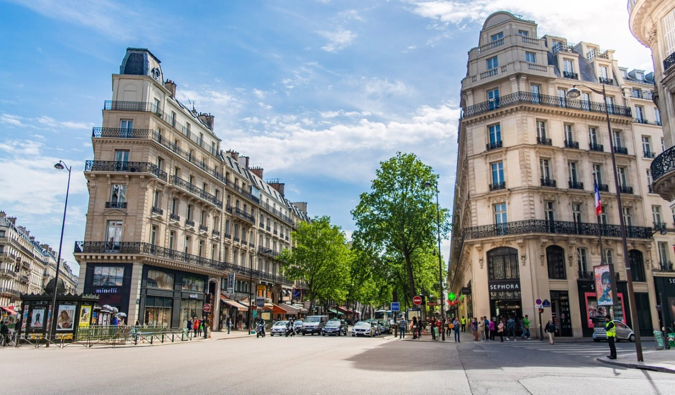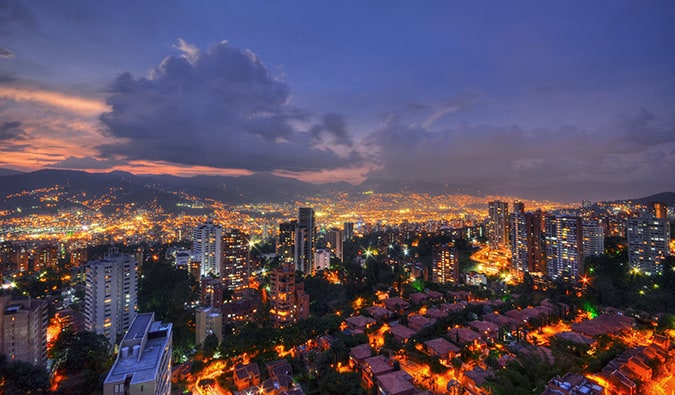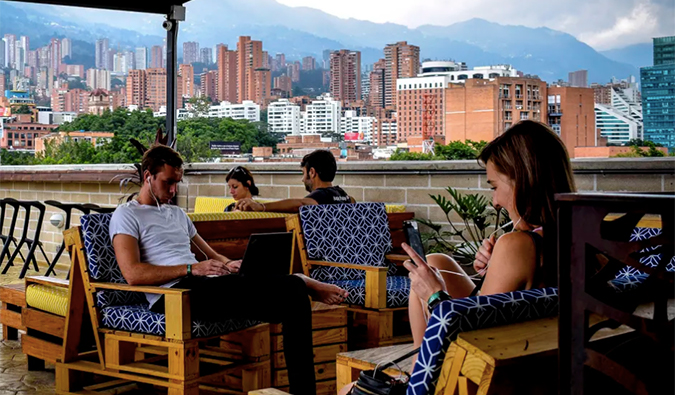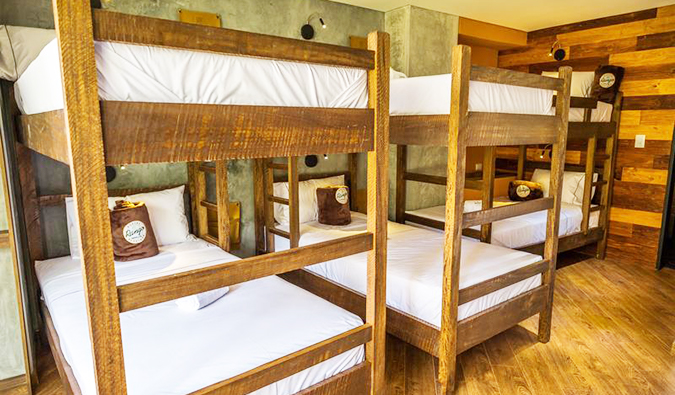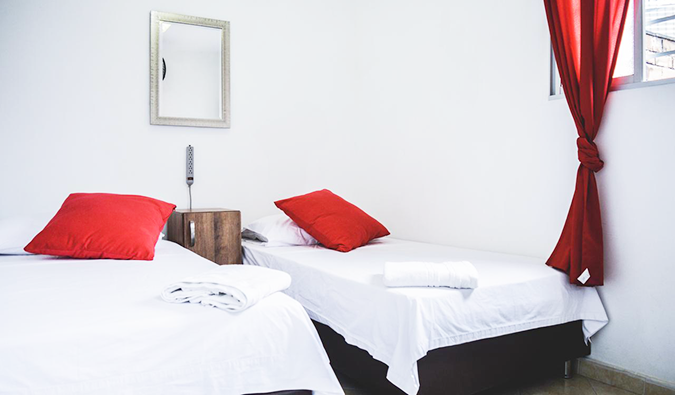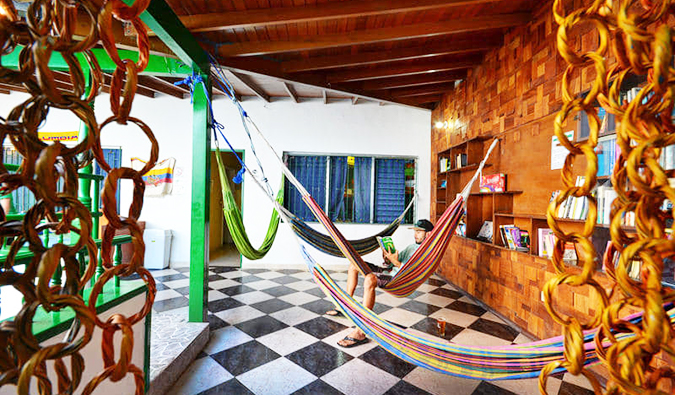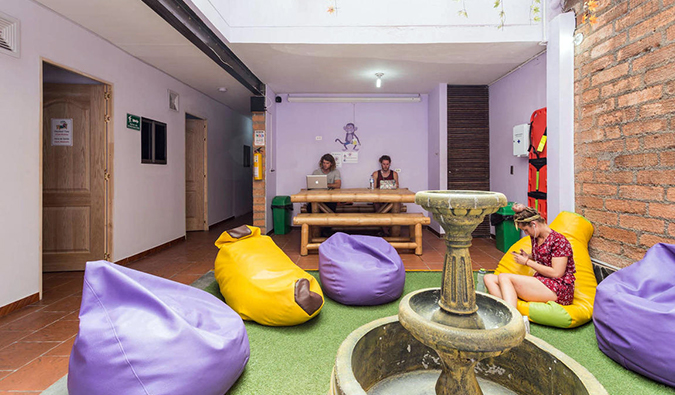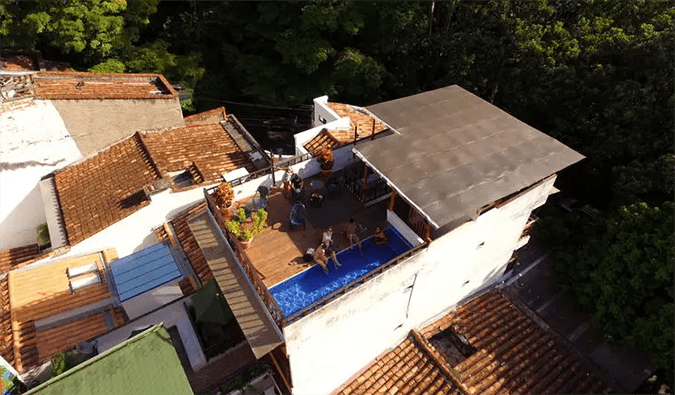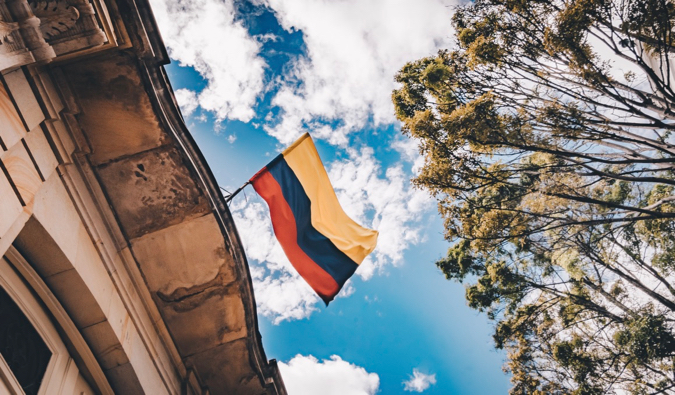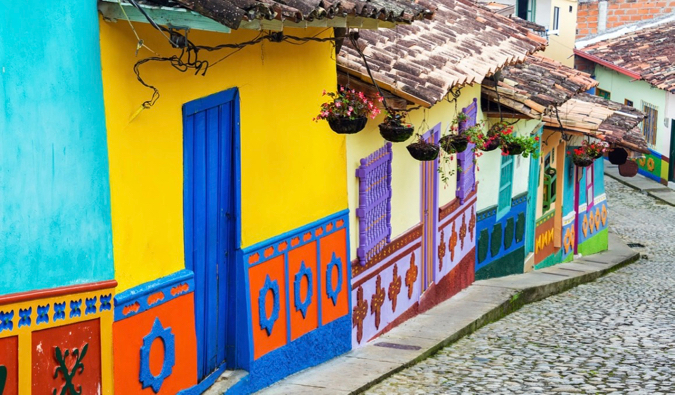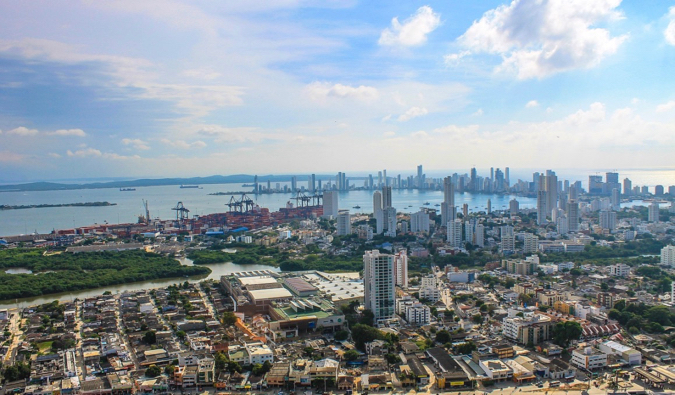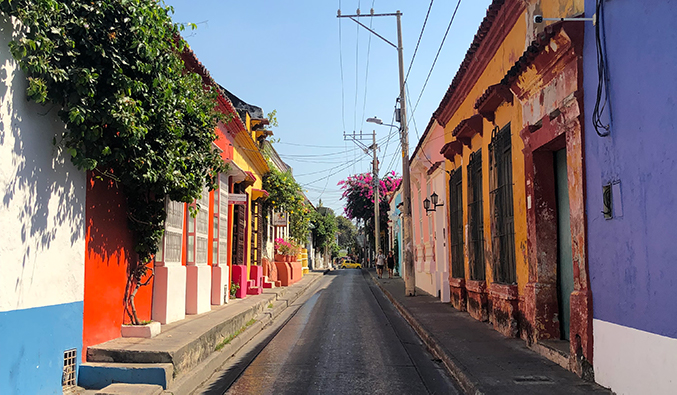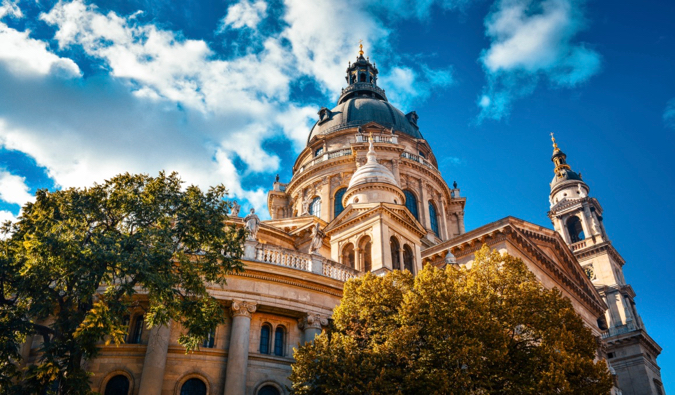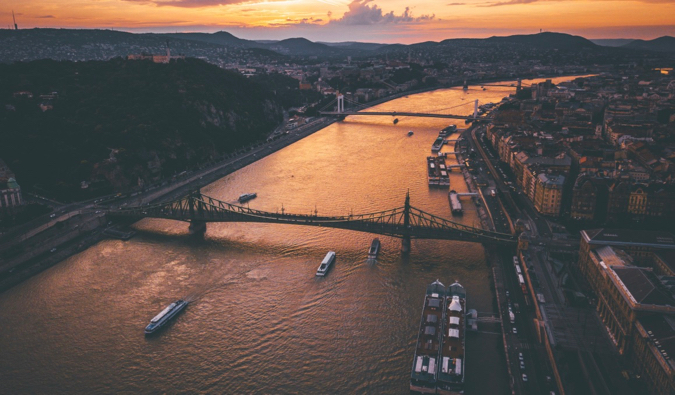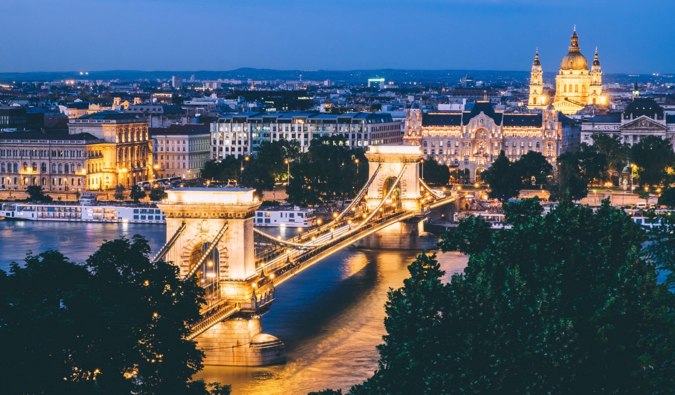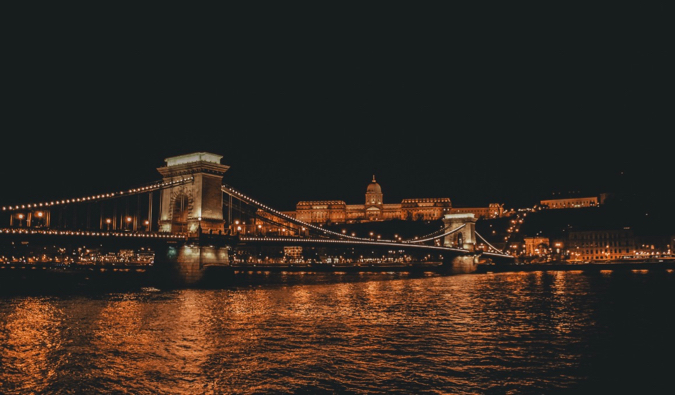
Posted: 03/25/2019 | March 25th, 2019
The capital of Colombia, Bogotá was the home to the region’s indigenous people, the Muisca, when the Spanish came around plundering gold and resources, and it’s been the country’s main city ever since.
Before I went, everyone told me Bogotá wasn’t anything special: dirty, crowded, hard to get around, and lacking the charm of the other big cities in Colombia.
“Spend a few days there and move on,” they all said.
Well, I spent a few days there — and then a few more.
I LOVED Bogotá.
It felt like the most “Colombian” city I visited. It’s not like the gringofied cities in the rest of the country. Its “gritty” nature was what appealed to me.
Bogotá was a vibrant, lively city I couldn’t get enough of.
The museum scene is incredible, there’s a lot of history, a blossoming art community, an exciting food scene, a wild nightlife, and super welcoming people.
It is also a huge city with a ton of tours, day trips, and other things to do. You could easily spend a week here.
To help you make the most out of your visit, here are my top 20 things to see and do in Bogotá.
20 Things to See and Do in Bogotá
1. Take a Free Walking Tour

One of my favorite things to do when I get to a new destination is to take a free walking tour. It’s a great way to get the lay of the land, see the main sights, and have a local expert answer any and all of my questions.
BeyondColombia has a great free walking tour that will give you a solid introduction to the city. It also has a free food tour, which is a terrific way to get a taste of some local Colombian dishes (you’ll spend around 18,000 COP/$6 USD on food for the tour). Just be sure to tip your guides!
For a more specialized tour, check out the Bogotá Graffiti Tour. This one operates by donation, using the money raised to reinvest in future community art projects.
2. Stroll in the Botanical Gardens

Opened in 1955, the Botanical Garden of Bogotá is home to almost 20,000 plants. There is a focus on regional plants, usually those that are endemic to the Andes and other high-alpine regions of the continent. It’s a really peaceful place to walk around, and there are some food stalls nearby, so you can grab a quick bite as you explore the gardens and browse the exotic flowers and trees.
Cl. 63 No. 6895, +57 1-437-7060, jbb.gov.co. Open daily 8am-5pm (9am-5pm on weekends). Admission is 3,500 COP for adults and 1,800 COP for children.
3. Climb Monserrate
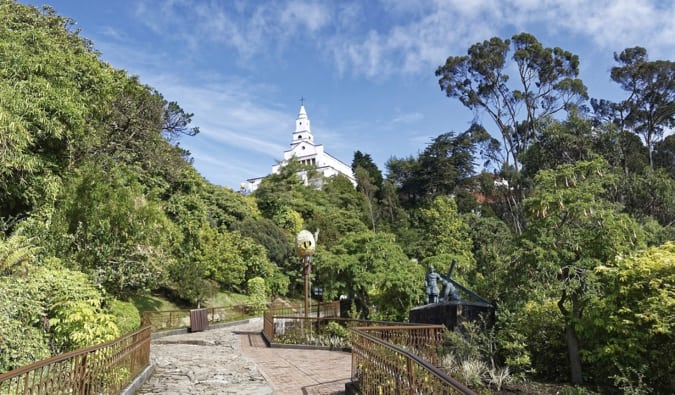
Standing tall at over 3,000 meters, you can see Monserrate from pretty much everywhere in town. It’s a popular spot to take in the view, and since there is a church at the summit, it’s also a popular spot for local weddings. You can walk up yourself in under an hour, or you can take a cable car or funicular to the top. Keep in mind that the walk up isn’t that safe at night or alone — thieves scout out the route. Be careful!
The funicular runs Monday-Saturday 6:30am-11:30am and Sundays 5:30am-4:30pm. The cable car is available Monday-Saturday 12pm-11:30pm and Sundays 10am-4:30pm. Tickets for either vehicle are the same price: round-trip tickets cost 21,000 COP for adults (12,000 COP on Sundays).
4. Visit the Museo del Oro (The Gold Museum)

This is the most interesting museum in the entire country and sees over half a million tourists every year. Opened in 1939, the Gold Museum documents the importance and use of gold in pre-Hispanic civilizations in Colombia and is home to over 55,000 gold items. There’s a lot of information to take in, so be sure to get the audio guide (8,000 COP) or join one of the daily free tours.
Cra. 6 No. 15-88, +57 1-343-2222, banrepcultural.org/bogota/museo-del-oro. Open Tuesday-Saturday 9am-6pm and Sundays 10am-4pm. Admission is 4,000 COP for adults and free for children. Admission is also free for adults on Sundays, but it gets busy quickly so be sure to arrive early!
5. See the Salt Cathedral

Located about an hour’s drive from the city in Zipaquirá, the Salt Cathedral is a Roman Catholic church that was built in the tunnels of an old salt mine. It’s 200 meters below ground, making this one of the more unique religious sites in the country, if not the world. Every Sunday, up to 3,000 people attend church services here.
Parque de la Sal, +57 315-760-7376, catedraldesal.gov.co. Open daily 9am-5:40pm. Admission is 58,000 COP for foreigners, with discounts available for seniors.
6. Check out the Museo de Botero

Founded in 2000, this museum is home to one of Latin America’s most important art collections. The museum was created after Fernando Botero donated hundreds of his works to the Banco de la República de Colombia with the promise that they would be displayed in a free museum for everyone to see. In addition to his own pieces, included in the donation were works by Monet, Picasso, and other world-famous artists. Take a free tour or get the audio guide (not free).
Cl. 11 No. 4-41, +57 1-343-1316, banrepcultural.org/bogota/museo-botero. Open Monday and Wednesday-Saturday 9am-7pm and Sundays 10am-5pm (closed Tuesdays). Admission is free, and free guided tours are available daily; see the website for updated times. Audio guides are available for 10,000 COP.
7. Explore La Candelaria

I really loved this neighborhood. This is the old part of Bogotá. You can wander the narrow cobblestone streets and take in the eclectic architecture, with art deco, colonial, and baroque styles all calling the neighborhood home. Many of the city’s best attractions (also, many hostels) are here too, such as the Botero Museum, the Gold Museum, and several churches and universities. Watch live music while hanging at Plaza Chorro de Quevedo, try the local chicha (a drink made from corn, often fermented to be alcoholic) on the side streets, and take in some of the amazing restaurants in this district.
8. See the Santuario Nuestra Señora del Carmen

The National Shrine of Our Lady of Carmen is a Gothic church located in La Candelaria. The church has a red-and-white striped pattern — both on the outside and inside — making it look like a giant candy cane. Built from 1926 to 1938, the church stands almost 60 meters tall has some incredible Byzantine and Moorish art.
Cra. 5 No. 8-36, +57 1-342-0972. Open Monday-Friday 7am-7:30am and 10am-4pm, Saturdays 7am-7:30am, and Sundays 7am-12:30pm.
9. Visit Simon Bolívar Metropolitan Park
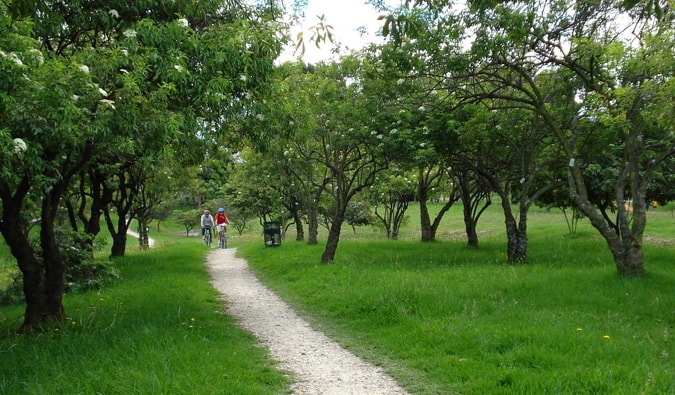
This is one of the most popular parks in Bogotá. Created in 1979, it spans almost 1,000 acres. You can find people exercising, relaxing, or attending concerts here. The park is named after the famous Simón Bolívar, who led the liberation of the region from its Spanish overlords.
Open daily 6am-6pm. Admission is free unless there is a concert or event in progress.
10. Wander Plaza Bolívar

This is the main square of Bogotá, home to Colombia’s Palace of Justice, the Cathedral of Bogotá, the mayor’s office, and the Capitol Building. It’s the historical heart of the city, with buildings from as early as the 16th century. Under the Spanish, the plaza was home to bullfights, circus acts, and public markets. Watch out for the plethora of pigeons!
11. Head to the Laguna de Guatavita (Lake Guatavita)

If you want to take a break from the city and get some fresh air, head out on a day trip to Lake Guatavita. Located around 60 kilometers north of Bogotá, this small lake is a sacred site to the region’s indigenous people and is apparently where the rumors of El Dorado originated. There are also hot springs in the nearby town of Sesquilé if you’re in need of some relaxation.
Day trips to the area last around 6 hours and will vary in price. Expect to pay at least 180,000 COP per person.
12. Explore Parque 93

This is the area of town with some of the best restaurants, nightclubs, and bars in the entire city. The park itself is home to an ongoing rotation of temporary art exhibitions. Located in one of the nicer areas of town, you’ll find a lot of good restaurants and cafés lining the park.
13. Attend Gringo Tuesdays

This is a weekly language exchange that evolves into an international party. Every Tuesday, you can meet with other locals and travelers for a few hours of conversation. Once that’s over, the real party begins and goes late into the night. It’s a fun, social night out if you’re looking meet fellow travelers. A lot of hostels organize party buses to the event, so if you’re coming from La Candelaria, this is a good transportation option.
Street 85 No. 11-53, Promenade del Faro, +57 311-492-0249, gringotuesdays.com/en. Every Tuesday, the language exchange occurs 4pm-8pm, followed by the party, which runs 8pm-3am.
14. Discover the National Museum of Colombia

Situated in the heart of Bogotá, this is the oldest and biggest museum in the entire country (and one of the oldest on the continent). Built in 1823, it’s home to over 20,000 pieces of art and historical artifacts, some dating as far back as 10,000 BCE. The building was actually used as a prison initially (it definitely looks imposing) until it transitioned into a museum in 1946. If you’re a history buff or just want to learn more about the country, this museum is a must.
Carrera 7 No 28-66, +57 1-381-6470, museonacional.gov.co. Open Monday-Saturday 10am-6pm and Sundays 10am-5pm. Admission is 4,000 COp for adults, 3,000 COP for students, and 2,000 COP for children aged 5-12.
15. Wander the Usaquén Market

Every Sunday, artisans line the cobblestoned streets to sell all sorts of local crafts and goods. While it’s usually referred to as a flea market, things here are a bit nicer and more upscale than some of the other markets. It’s still quite affordable, though, and makes for a fun way to spend the day.
The market runs 11am-4pm every Sunday in Usaquén.
16. Explore the Museo Santa Clara

This church was built in the 17th century and is actually one of the oldest in the entire country. It was deconsecrated in the 1960s and converted into a museum by the government. There are over 148 baroque paintings that almost entirely cover its walls, making this one of the most beautifully decorated churches you’ll see in Colombia.
Cra. 8 No. 8-91, +57 1-337-6762, museocolonial.gov.co. Open Tuesday-Friday 9am-4:30pm and Saturday-Sunday 10am-3:30pm. Admission is 4,000 COP for adults and 2,000 COP for children.
17. Grab a snack from La Puerta Falsa

This little shop has been serving locals for over 200 years! La Puerta Falsa (The False Door) is a small restaurant with room for fewer than 20 people, yet the tamales and ajiaco soup have been community staples for generations. If you’re looking to try traditional Colombian food, this is the place to go!
Calle 11 No. 6-50, +57 1-286-5091, restaurantelapuertafalsa.inf.travel. Open daily 7am-10pm though its schedule isn’t set in stone.
18. Visit the Iglesia de San Francisco

Built in the 16th century, this Catholic church is the oldest surviving church in Bogotá. The interior is incredibly ornate, with a beautiful altar that dates back to the 17th century. It’s still in use, and you’ll likely see some locals praying during your visit, so make sure to dress appropriately and be respectful.
Av. Jimenez De Quesada No. 7-10, +57 1-341-2357. Open Monday-Friday 6:30am-10:30pm; 6:30am-12:30pm and 4pm-6:30pm on Saturdays; and 7:30am-1:30pm and 4:30-7:30pm on Sundays. Admission is free.
19. Sample the local brews

Bogotá (and the country has a whole) has a growing craft beer scene. Bogotá Craft Beer offers a four-hour tour that takes you to some of the best bars and breweries in town. The tour includes a knowledgable guide as well as secure transportation from place to place. I highly recommend it.
Tours are available daily 4pm-9pm and need to be booked in advance via their website. Tickets are around 95,000 COP per person.
20. Take a food tour

Bogotá is a great city for foodies, and the best way to get a sense of the culinary offerings is to take a food tour. Bogotá Food Tour will take you around La Macarena, Bogotá’s bohemian and artistic neighborhood. The tour lasts three hours and will take you to three different restaurants where you can sample a local dish and drink. Tours also include pickup and drop-off at your accommodation.
Tours are available Monday-Saturday and begin around 7pm. Booking in advance is required so you can secure your transportation. Tickets are 188,500 COP per person.
It’s true that Bogotá is an “edgy city” with a lot of petty crime. Yet I loved the atmosphere and vibe of the city. It had grit (kind of like Naples, Italy). I loved the art, the museums, the food. The city has so much to offer travelers. You can really fill a lot of time between all the sights, tours, parks, and activities. I would have liked to stay longer in Bogota if I could.
I’d budget three to five days for your visit. It will definitely be worth it.
Book Your Trip to Colombia: Logistical Tips and Tricks
Book Your Flight
Find a cheap flight by using Skyscanner or Momondo. They are my two favorite search engines because they search websites and airlines around the globe, so you always know no stone is being left unturned.
Book Your Accommodation
You can book your hostel with Hostelworld. If you want to stay somewhere other than a hostel, use Booking.com as they consistently return the cheapest rates for guesthouses and cheap hotels. I use them all the time. My favorite places to stay are:
- Masaya Hostel – This is a cool hostel located in La Candaleria. It has lots of common space where you can meet people and some comfy hammocks you can relax in; it also hosts all sorts of activities and excursions, from live music to salsa lessons.
- Botánico Hostel – This cool hostel is relvatively new. The beds are comfy, it’s in a good location, and it offers free breakfast too!
Don’t Forget Travel Insurance
Travel insurance will protect you against illness, injury, theft, and cancellations. It’s comprehensive protection in case anything goes wrong. I never go on a trip without it, as I’ve had to use it many times in the past. I’ve been using World Nomads for ten years. My favorite companies that offer the best service and value are:
- World Nomads (for everyone below 70)
- Insure My Trip (for those over 70)
Looking for the best companies to save money with?
Check out my resource page for the best companies to use when you travel! I list all the ones I use to save money when I travel — and I think they will help you too!
Want More Information on Colombia?
Be sure to visit our robust destination guide on Colombia for even more planning tips!
Photo credits: 13, 14, 15, 16, 17, 18, 21, 20, 21
The post 20 Things to See and Do in Bogotá appeared first on Nomadic Matt's Travel Site.

